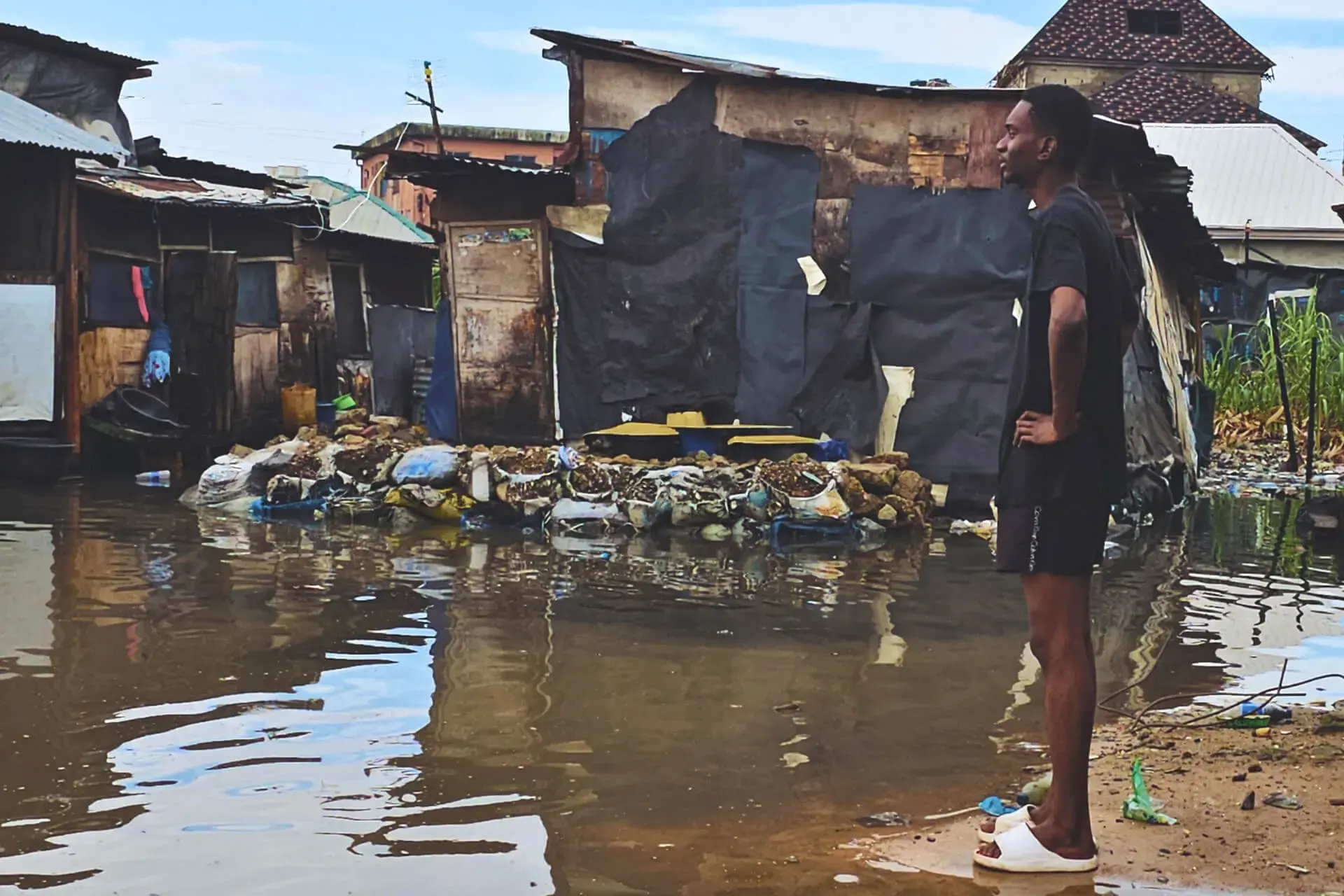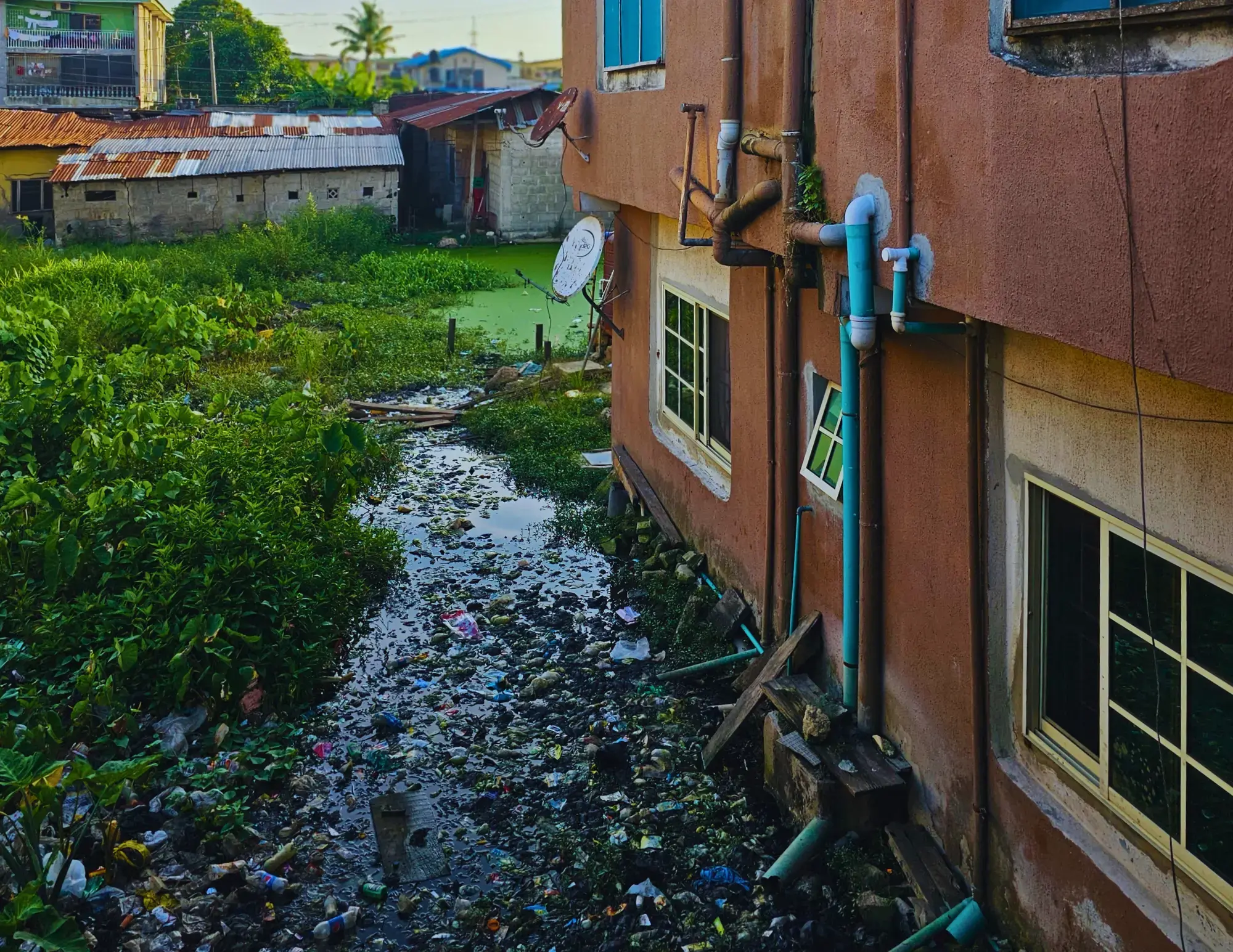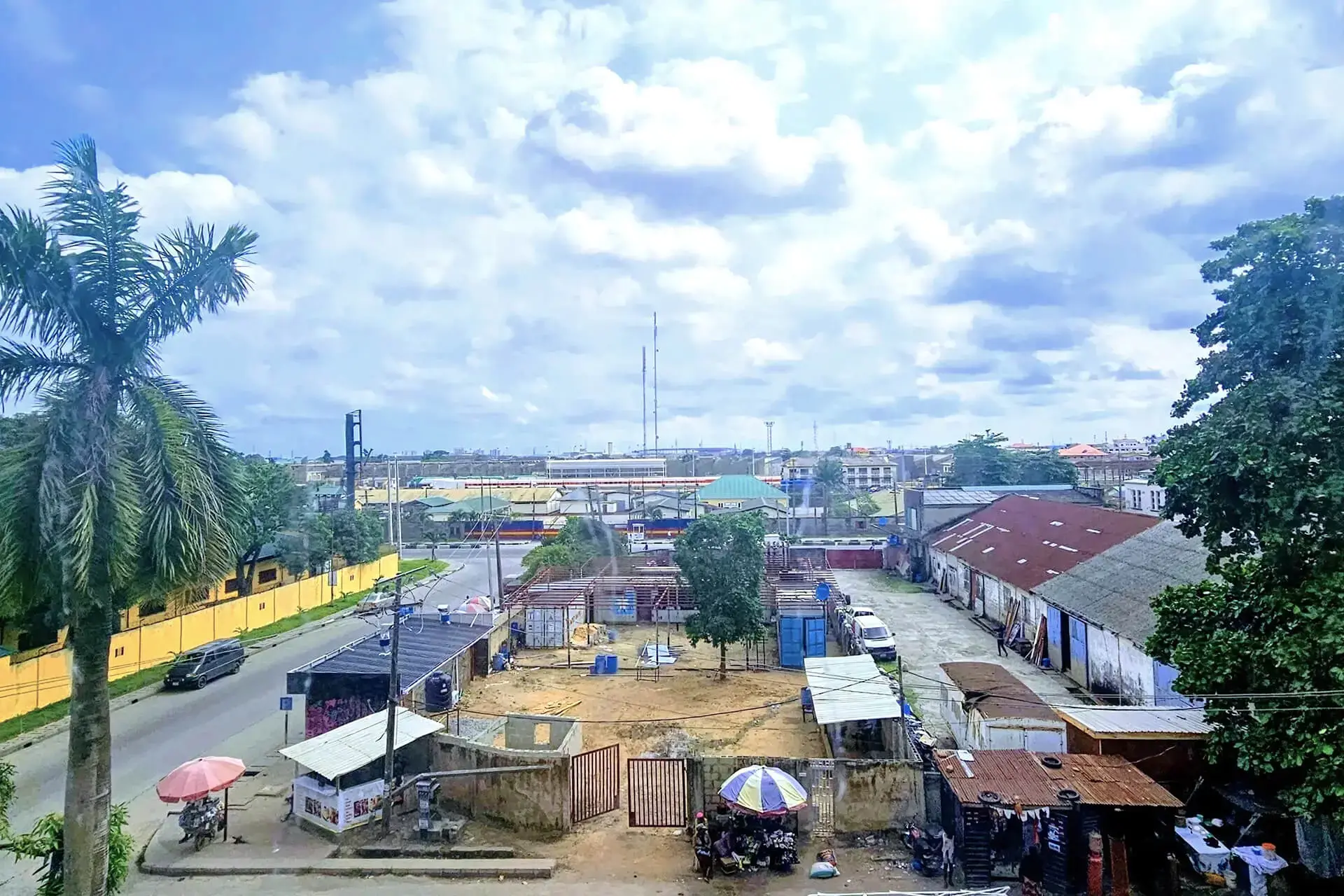
After every rain, the streets of Lagos get flooded because of poor drainage systems and improper waste disposal. Flooding leads to breeding of disease-causing rodents and mosquitoes and also damages the roads, posing a threat to commuters, Precious Williams shows in this photo essay.
People of Nigeria's most populous urban centre, Lagos, contend with persistent flooding. With over 24 million residents, this metropolis succumbs to heavy rains that turn streets and roads into streams.
In neighbourhoods like Maza Maza, in the Amuwo Odofin local government area of Lagos state, school children returning home often find themselves stranded and forced to cross flooded streets on foot. This persistent waterlogging is a consequence of inadequate drainage systems within the state.
The drainage system design of Lagos is a disconnected network of shallow gutters that channel wastewater from homes into streets, with canals serving as the ultimate endpoints. While this system sufficed during the 20th century, the surge in population driven by industrial success has rendered the current infrastructure inadequate.
In today’s scenario, the city faces an urgent waste management issue obvious in its drainage system. Plastics, styrofoam packaging, nylons and household waste all find their way into the drainage gutters, contributing to blockages. The neglected gutters become a hub for stagnant wastewater close to residential homes, becoming a breeding ground for disease-carrying insects, notably for mosquitoes that contribute to the spread of malaria.
Additionally, rainwater collects on the roads, facilitating the deterioration of infrastructure and giving rise to potholes — a visible imprint of the city's evolving tale.

As a nonprofit journalism organization, we depend on your support to fund more than 170 reporting projects every year on critical global and local issues. Donate any amount today to become a Pulitzer Center Champion and receive exclusive benefits!
As the rainy season persists, lasting from late March to early November, the cycle of waste management and drainage system issues continues because of mismanagement and oversight. In numerous residential parts of Lagos, including the state capital, Ikeja, waste disposal companies under contract do not make regular visits to the neighbourhoods.
With the absence of law enforcement to regulate waste disposal, vacant backyard lands often become dumping sites for household waste.
Moreover, even when drainage cleaning companies are called upon, they fail in their duty, leaving piles of dirt and sand cleared from gutters on roadsides. During a tour, Williams Praise, a resident of Ikeja, pointed out unattended empty gutters near his home. He stated that these remnants are soon washed back into the gutters by rain, perpetuating a cycle.
Beneath the surface, a concealed root of Lagos' issues lies in the absence of urban and regional planning. This leads to the canals becoming targets for refuse disposal, transforming into a hub for rodents and mosquitoes and thus breeding grounds for disease.
Situated in between the localities of Oworoshoki, Oshodi, Mile-2, and Iwaya, some houses face a concerning issue: the absence of proper drainage gutters.
"Many residents do not comply with building regulations and standards. Some buildings are developed without consideration for drainage lines at all," says Ayodele Olowokporuku, a researcher and consultant for the World Bank specialising in flood and risk assessment.
This issue leads to haphazard construction of residential structures near canal passageways. Landlords, in their failure to adhere to state regulations, either opt for the creation of disjointed shallow drains or blatantly disregard the need for proper drainage altogether, Olowokporuku explains.
While Lagos is contending with a multifaceted health risk linked to drainage problems, Olowokporuku underscores the importance of urban planning, enhanced infrastructure and enforced drainage regulations to ensure sustainable solutions.



















